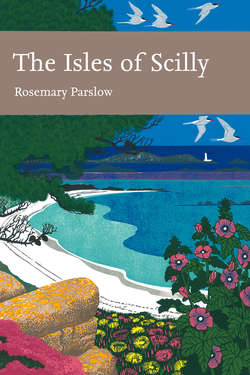Читать книгу The Isles of Scilly - Rosemary Parslow - Страница 43
THE EVACUATION OF SAMSON
ОглавлениеSir Walter Besant’s romantic tale of Armorel of Lyonesse (1890) has coloured the island with a totally unrealistic, fictitious past; there is even a ruined cottage on the island reputed to be Armorel’s cottage. Sadly the reality is quite different: although the island was inhabited for many years, life for the islanders was hard and eventually Samson was abandoned in 1853-5 during the ‘reign’ of Augustus Smith.
Samson has many archaeological sites from the Bronze Age, mostly burial monuments but also a field system and hut circles on the south side of South Hill and another field system on North Hill. At some time the island became deserted and may have then been uninhabited for centuries. Finds of pottery from below dunes in East Porth may point to a lone cleric or other person living there in the thirteenth century (Thomas, 1985). In 1669 five people were living on Samson, possibly in a single dwelling, when Cosmo III, Grand Duke of Tuscany, made his short visit to Scilly. At some time after this the population rose to some thirty or forty people; between about 1755 and 1780 was probably their most settled time.
The main difficulty with living on Samson was the very poor water supply. The wells were slow or silted up, and the water was bad. At times water had to be fetched in barrels from Bryher or Tresco. It must have been a hard existence, based on fishing, which was the islanders’ major occupation, growing a few basic crops, corn and potatoes, and keeping stock. From the limpet shell middens they left behind there clearly were difficult times, when shellfish became a major part of their diet. Other sources of income, piloting and kelp burning, were important but never enough to sustain the population.
At the time of the greatest population, in 1829, there were nine cottages and thirty-seven people. The islanders grew their crops in small strip fields or lynchets. Even their tiny fields were subdivided into even tinier plots, in keeping with the custom of the time that when a man died his holding would be divided between his sons and sometimes also widowed daughters and daughters-in-law. The boundaries of these divisions were often based on earlier lynchets or were laid out strip-fashion. There were no trees for fuel so turf would have been cut from the tops of the hills (the top of North Hill is still very bare to this day, possibly from turf cutting or later fires). It was reported by Captain Robert Welbank, a Trinity House visitor in 1841, that both bracken and dried seaweed were used for fuel, and any driftwood would also be precious (Thomas, 1985). At that time there were twenty-nine people living on Samson, seven being children. There were only seven households: four farmers, one farmer’s widow, two fishermen. By this time Augustus Smith was introducing his reforms and imposing them on the other islanders in Scilly, and he soon prevailed on the tenants on Samson to relocate to St Mary’s or other islands, with the benefits of education for their children and better occupation for themselves. The last inhabitant is said to have left in 1855. After that the houses would have been stripped; they soon began to collapse and are now all ruins (Fig. 19). Shortly after the evacuation Augustus Smith built a large stone-walled enclosure around the top of South Hill in which he attempted to keep a herd of fallow deer Dama dama. The deer, however, soon escaped and tried to get to Tresco. Some accounts say they drowned, but the distance is not very great and at low tide they might have walked across. A herd of cattle was also grazed on the island.
FIG 19. Ruined cottages on Samson, photographed during a visit to the island by a party of geology students in the 1890s. (Gibson collection)
FIG 20. On Samson primroses still grow near the ruins of the cottages. (Rosemary Parslow)
Besides their ruined dwellings, kitchen middens and other artefacts, the inhabitants of Samson left other mementos. They left behind several trees, tamarisk Tamarix gallica, elder, privet Ligustrum ovalifolium hedges (the latter now apparently lost, as only wild privet L. vulgare is found on the island today), burdock Arctium minus and primroses Primula vulgaris, which are still found not far from the ruins (Fig. 20). They also left the stone hedges that marked the boundaries of some of their tiny fields. Despite the history of Samson, Kay (1956) was of the opinion that it was the sort of place where a couple of enterprising young men could earn a healthy living with a flower farm and a few cattle. He had earlier heard of a Scillonian who had been offered a deal on the island, £10 per year rent for twenty years, then £250 per year afterwards. His friend did not take up the offer, his new wife not fancying a life on an uninhabited island – and it is probably fortunate for Samson that it has remained uninhabited by humans.
